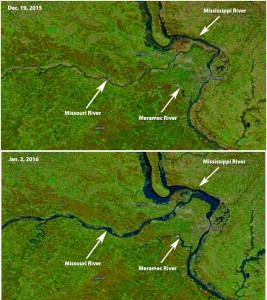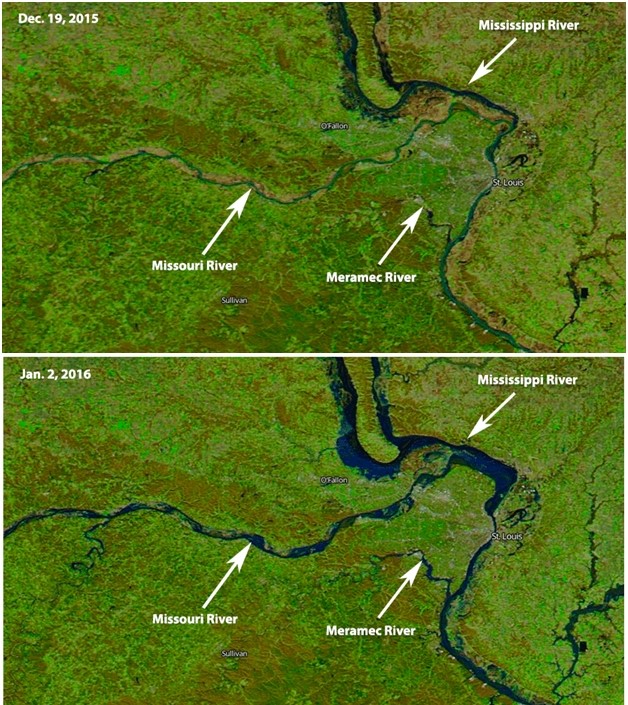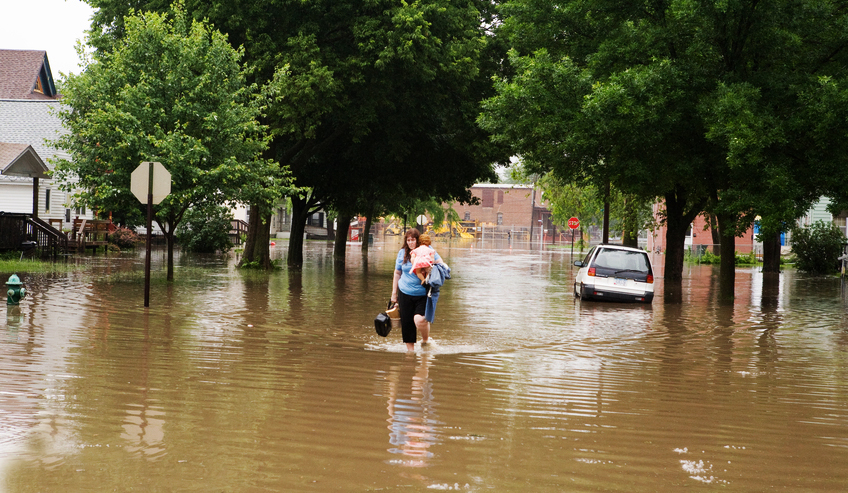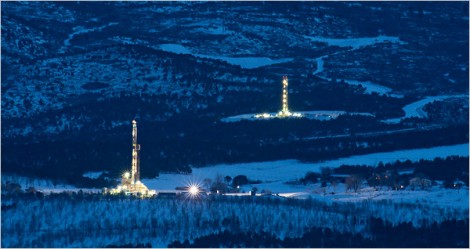Déjà Crue, all over again

Federal Flood Protection Standards One Year Later
February 25, 2016How Kayaking Saved the Los Angeles River
March 17, 2016By Brad Walker, Missouri Coalition for the Environment – Rivers Director
Here we go again; another major Midwest flood and lots of earnest questions about why it happened, who’s to blame, how we can fix it, etc., etc., etc.
 Comparison of the Missouri, Mississippi and Meramec Rivers water volumes – December 19th at and January 2 at bottom. (Sources: Weather Channel & NASA) Comparison of the Missouri, Mississippi and Meramec Rivers water volumes – December 19th at and January 2 at bottom. (Sources: Weather Channel & NASA) |
All one has to do is read old studies, not just ones you can find on the internet, but hard copy reports from “way back” in the 1970’s and 1980’s (and even much before then) to see the same questions are getting asked over and over again after each flood. The only uniquely new issue that is finally becoming ingrained within our questions today is the near complete acceptance that we have messed up our climate and it’s having an impact upon floods.
It is, however, difficult to parse and then quantify the numerous human actions that have increased the impacts of flooding. Their existence is well documented and include channelizing (narrowing) streams and rivers, placing vast amounts of impervious surfaces in urban and suburban areas, draining almost all farm land with tiles, destroying huge areas of wetlands, disconnecting floodplains from their rivers with levees (mainly for agriculture), and building inappropriate developments in floodplains. But to decide which the worst offenders are or what bad decisions need to be corrected in what order is the dilemma. And gathering the political will required to make the corrections has always been the major obstacle.
The need for a comprehensive self-evaluation regarding how we live in this world has been voiced in the past and, for the most part, summarily ignored. As is the case with many of our current problems, the fault is laid squarely at our own feet as a nation: our over-reliance upon technology to solve all problems, our ignoring of how the natural world works and the value that it provides us – if we let it. And let’s not forget the issue of greed and self-interest that is rampant today.
To solve our flood problems we have historically relied primarily upon structural means of flood control structures including dams, levees, and floodwalls, ignoring that these methods can have as many, if not more, disadvantages as they have benefits. Often those benefits and disadvantages/damages are also not equally shared between people or communities. A more appropriate, and well documented approach, is the use of non-structural measures such as restricting and relocating development in flood prone areas; removing, lower or moving back levees; and flood-proofing existing structures should be formally adopted by municipalities and counties.
Of all ecosystems, the river is the most communal, but we have done all that we can to destroy that amazing trait by turning our river systems into confined drainage ditches, dump sites, barge canals, and malls. It is no wonder that they no longer function properly. So how do we fix them?
The answers are there for us to read and follow. We just have to decide to act as a community and not as a group of individuals protecting our own piece of the world. Here is a short list of major actions/decisions we hope to start on in Missouri:
- We need the issue of the affect of river management structures on flood stages to be settled so that we can move forward with whatever adjustments that need to be made.
- The State of Missouri needs to step up and join the other Upper Mississippi River states by writing a state level floodplain development law that stops destructive local development within our rivers’ floodplain.
- Additional flood storage within our rivers must be created. This will involve reconnecting floodplains in various areas through the removal, moving back and/or lowering of levees. The most strategic areas along our rivers, which will provide the most public benefit for the cost, need to be determined and those areas targeted.
Articles addressing these topics and others, along with some interesting tools, will be posted on the MCE site over the next year. This is a long-term process that will require focus and dedication. We are all in this together and not acting will just compound future costs.
And visit our River Roils Blog at: http://moenvironment.org/environment-blog/category/brad-walker/




